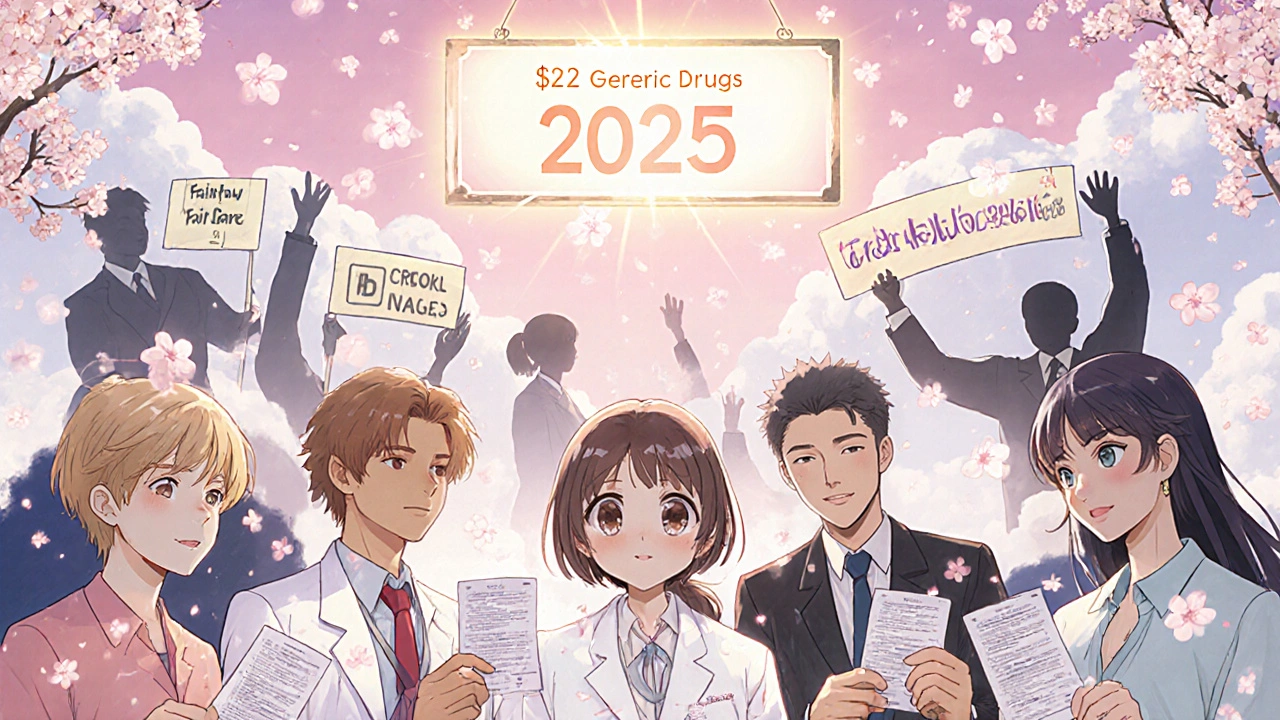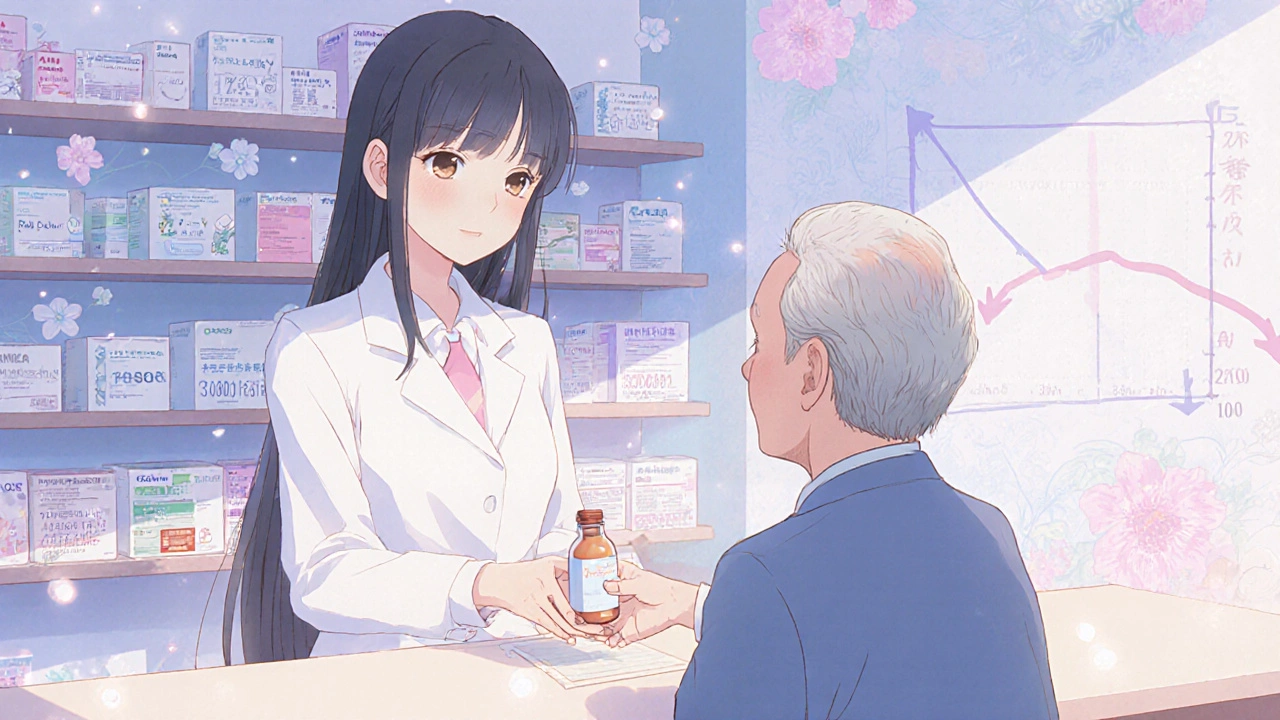When you pick up a generic prescription at the pharmacy, you might think the price is simple: cheaper than the brand name, end of story. But behind that low copay is a tangled web of laws, payment models, and corporate incentives that decide exactly how much the pharmacy gets paid - and whether they can even afford to fill your script. In the U.S., federal and state rules don’t just influence generic drug prices; they control whether pharmacies make money, break even, or lose money on every pill they dispense.
How Generic Drugs Are Paid For: AWP vs. MAC
There are two main ways pharmacies get reimbursed for generic drugs: Average Wholesale Price (AWP) and Maximum Allowable Cost (MAC). AWP used to be the standard, but it’s largely outdated. It’s based on a list price set by manufacturers - often inflated and not reflective of what pharmacies actually pay. Today, most plans use MAC programs, which set a fixed payment cap for each generic drug based on what it realistically costs to buy in bulk.Here’s how it works: If your generic drug’s MAC is $4.50, and the pharmacy paid $5.20 to buy it from a wholesaler, they lose 70 cents per prescription. That’s not a small loss - especially when you’re filling hundreds of these a day. MAC rates are updated weekly by pharmacy benefit managers (PBMs), and they often lag behind real market prices. Pharmacies don’t get to negotiate. They either accept the rate or get kicked off the network.
The Role of Pharmacy Benefit Managers (PBMs)
PBMs are the middlemen between insurers, pharmacies, and drug makers. They control which drugs are covered, what copays patients pay, and how much pharmacies get paid. But their business model creates a conflict of interest. PBMs earn money through “spread pricing” - the difference between what the insurer pays them and what they pay the pharmacy. If the insurer pays $10 for a generic, and the PBM pays the pharmacy $7, they pocket $3. That $3 isn’t disclosed to the patient or the pharmacy. It’s hidden in the fine print of contracts.PBMs also steer patients toward their own mail-order pharmacies or affiliated retail chains. Independent pharmacies - the local ones you’ve known for years - get squeezed out. In 2023, the average profit margin on generic drugs for independent pharmacies was just 1.4%. That’s down from 3.2% in 2018. Many can’t survive on that.
Substitution Laws: What the State Requires
Every state has laws about generic substitution. Most require pharmacists to substitute a generic for a brand-name drug unless the prescriber says “do not substitute.” But here’s the catch: even if substitution is allowed, the pharmacy still has to get paid fairly. Some states have passed laws to protect pharmacies from unfair MAC rates. For example, California and New York now require PBMs to reimburse pharmacies at or above the actual acquisition cost of the drug - not some arbitrary MAC number.Other states mandate transparency. Pharmacists can now tell patients if paying cash might be cheaper than using insurance. That’s because of a 2018 federal ban on “gag clauses” - rules that once forced pharmacists to stay silent if a drug cost less out-of-pocket than the insurance copay. Before the ban, one in five prescriptions were filled at a higher cost than necessary because patients didn’t know they could pay less.

Medicare Part D and the Drug List
Medicare Part D covers over 50 million people. In 2022, generic drugs made up 84% of prescriptions but only 27% of total spending - meaning they saved billions. But formularies are still messy. Some plans put generics on higher tiers, forcing patients to pay more. Others require prior authorization just to fill a common generic like metformin or lisinopril.In 2025, CMS is testing a new model called the “$2 Drug List.” It’s simple: for about 100 to 150 widely used generic drugs - things like atorvastatin, levothyroxine, or amlodipine - Medicare Part D plans will cap the patient copay at $2. The goal? Improve adherence and cut confusion. If a drug is clinically important, widely used, and cheap, why make patients jump through hoops? The model is based on what big retailers like Walmart and Kroger already do: fixed low prices on essential generics.
How Medicaid and Rebates Shape the Market
Medicaid covers 85 million Americans and relies on the Medicaid Drug Rebate Program (MDRP). Drug makers must pay rebates to states based on how much they charge. These rebates help offset costs for low-income patients. But here’s the irony: the higher the list price, the bigger the rebate. So manufacturers have an incentive to raise prices - even on generics - to get more money back from states. That’s why some generic drugs still carry high list prices, even when their production cost is pennies.States also use Preferred Drug Lists (PDLs) to control costs. If a drug isn’t on the list, the pharmacy might not get paid at all unless the doctor jumps through prior authorization hoops. This system saves money - but it also delays care. Pharmacists spend hours calling doctors just to get approval for a drug that’s been on the market for 20 years.

What’s Changing in 2025
The Inflation Reduction Act of 2022 brought big changes. Starting in 2025, Medicare Part D beneficiaries will have a $2,000 annual cap on out-of-pocket drug costs. That means even if your plan has a high deductible, you won’t pay more than that for all your meds in a year. For people on multiple generics, this could mean big savings.Meanwhile, the Federal Trade Commission is cracking down on “pay-for-delay” deals. That’s when brand-name companies pay generic makers to delay launching their cheaper version. These deals kept drugs like Lipitor and Singulair expensive for years. Now, regulators are treating them as anti-competitive and blocking them.
Independent pharmacies are pushing for fairer reimbursement. The National Community Pharmacists Association is lobbying for laws that tie MAC rates to real-time wholesale prices, not outdated benchmarks. Some states are already moving in that direction. But without federal action, the system remains broken for small pharmacies.
Why This Matters to You
If you take generics - and most people do - you’re directly affected by these rules. Your copay might seem low, but if the pharmacy loses money on it, they might stop carrying it. Or they might raise prices on other services to make up the difference. If your doctor prescribes a generic and your pharmacy says it’s not covered, it’s not because the drug doesn’t exist. It’s because the reimbursement rate is too low.Knowing your rights helps. Ask your pharmacist: “Is this cheaper if I pay cash?” Check your plan’s formulary online. Look for the $2 Drug List if you’re on Medicare. And if you’re paying more than $5 for a common generic like ibuprofen or omeprazole, you might be able to find it for less at a discount retailer.
The system isn’t designed to help pharmacies or patients. It’s designed to cut costs for insurers and PBMs - and sometimes, it cuts too deep. But change is coming. Laws are evolving. Patients are speaking up. And in 2025, those changes might finally make the system work for the people who need it most.


I never realized how much of a gamble it is for my local pharmacy to fill my prescriptions. I just assume they make money on generics, but hearing they lose money on some is heartbreaking. My grandma’s blood pressure med costs her $5, but the pharmacy probably loses a dollar on it. That’s not sustainable.
PBMs are the real villains here!! They're sucking the life out of small pharmacies and we let them!! This is why America's healthcare is broken!! No oversight!! No accountability!! Just greedy middlemen cashing in while real people suffer!!
My pharmacist told me last week that my omeprazole was cheaper cash at Walmart than my copay. I was floored. I’ve been paying $12 for 30 pills for years. Cash was $4. I feel like I’ve been scammed by my own insurance.
This is such an important breakdown. I’ve been in pharmacy tech for 8 years and this is exactly what we deal with daily. MAC rates lag behind real costs by weeks sometimes. We get billed for drugs at $6.50, but the MAC is $5.95. We eat the difference. It adds up fast. I’m glad someone’s finally talking about this.
Interesting read. I didn’t know about the gag clause ban. That’s actually a big win for transparency. Still, the system feels rigged. I just hope the $2 Drug List doesn’t get watered down by lobbying.
As someone from India where generics are the backbone of healthcare, I’m amazed at how complex this system is in the U.S. In my country, a generic drug costs less than a cup of tea and pharmacies thrive. The profit motive here has turned medicine into a financial puzzle. Simple solutions like fixed pricing should be universal.
The Medicaid rebate system is a classic perverse incentive. If a manufacturer raises the list price, they pay more in rebates, but they also get more revenue. It’s like rewarding someone for inflating a bubble. The system is designed to fail the patient while pretending to help.
They say generics are cheap, but have you ever seen a pharmacist cry because they can’t afford to keep the lights on? This isn’t just about dollars - it’s about dignity. These are the people who remember your name, check your interactions, warn you about side effects. And now they’re being bled dry by corporate middlemen who’ve never held a pill in their hand. This is a moral crisis.
Stop pretending this is a healthcare issue. It’s a corporate power play. PBMs, insurers, manufacturers - they’re all in bed together. The government lets them. The public doesn’t care enough to fight. And now we’re supposed to be grateful for a $2 copay? That’s not progress. That’s just the bare minimum after decades of exploitation.
It's ironic isn't it? We want cheap drugs but we don't want to pay for the system that makes them cheap. The real question: Who should bear the cost? The patient? The pharmacist? The state? Or the invisible hand of the market? 🤔
Anyone who thinks this is about ‘affordability’ is delusional. This is about control. The state, the PBMs, the insurers - they’ve engineered a system where the pharmacy is the disposable intermediary. The patient is a statistic. The pharmacist is a clerk. And the drug? Just another line item in a spreadsheet. This isn’t medicine. It’s algorithmic exploitation.
So you're telling me my $10 copay for metformin is actually costing the pharmacy $12? And they still have to pay rent and staff? Then why don't we just pay the pharmacy directly? Why involve 12 middlemen? This is why I hate American healthcare.
My pharmacist just got shut down last month. Not because of COVID. Not because of bad business. Because the PBM lowered the MAC rate for lisinopril to $3.20. She paid $4.10 for it. She filled 80 a day. She lost $72 a day. After 3 years of that? She had to close. Now I have to drive 20 miles. I miss her. She knew my cat’s name.